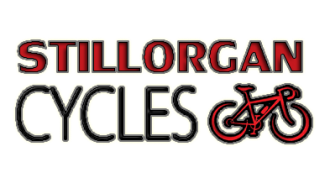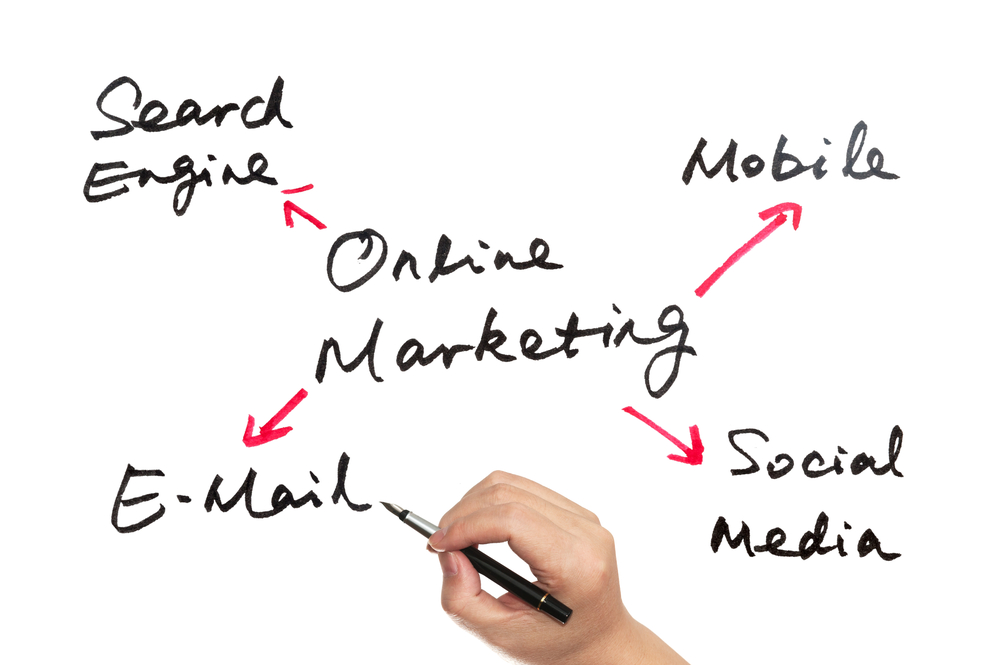
Online Marketing Strategies For The Small Business Owner To Implement In 2015
Resources at small businesses are always tight and no matter what the business environment is out there (boom or bust) marketing spend is always relatively low. So how do you know what the best strategies are to follow for your business? Well the answer is always to think about the best ways of putting your business message in front of as many potential clients as possible! Keep it as simple as that. Yes there will some trial and error and ongoing analysis of which campaigns are working best for your business. That is best practice for all companies. Roll out each strategy one after the other and you spend a bit the idea is to get twice or three times that back to fund the next strategy. Keep the wheel turning and success will build over time. Here are some key strategies to look at for your business.
-
Free Social Media Channels
Start with the basics. Free is always great to hear and is a no brainer. Set up your business profiles on the main social media channels (Facebook, Twitter and LinkedIn). Give all of your staff admin access at the start and get them to invite all of their friends to like/follow the company page. Feed the channels with relevant and share worthy content. That’s the best way to promote share. Don’t put nonsense on your business pages (save all other content for your own personal pages). You can be creative and use the social media channels for promotions, competitions and special offers. Post all of your company news, business tips and useful advice on your social channels. Always use website links to direct traffic for further details of your posts and use imagery as much as possible as that is what catches the eye initially.
-
Social Media Advertising
Once you have the free channels up and running it is now time to start dipping your toes with some paid advertising campaigns. This doesn’t mean that you are going to loose the run of yourself and spend all of the companies resources online. Small spend to start with and constant monitoring is the order of the day. Google Adwords is by far the most popular online advertising medium and is the starting point for all consumer based businesses. Set up a campaign directing specific visitors to a specific page on your website and set your budget at a small daily level (say €2 or €3 per day). Ask all new enquirers where they came across you so that you can catalogue the actual success of each campaign. Your adwords campaign will always max out so be as specific as possible.
Next try some Facebook Advertising and see how it goes. You can do this in two ways (FB Post Boosts or Generic Ads). Post Boosts are great for things like key messages, videos and events but are not well targeted so reach a very broad audience. FB advertisement are much more targeted and ads are displayed on the right hand side of your page as well as in potential clients newsfeed (im sure you have seen them before). Again set your budget at €2-€3 per day and the stats on Fb are very good so check in constantly.
Finally for the more adventurous business to business small company have a look at LinkedIn Advertising to get your message directly into the feed of the specific business executive you would like to make contact with. LinkedIn can be extremely efficient for targeting a very specific audience but is also the most expensive of the three main paid platforms at around €2 per click (Fb is about €.20 and Adwords €.50). If trying this avenue your budget will need to be a bit higher so set it on a one or two month trial, allocated a few hundred euros and decide after that if you have made enough key contacts to justify the campaign.
-
Content Marketing/Blogging
This is very much the trend area for modern small business advertising and is a large determinant on increasing visitor numbers in a large way. Essentially it means continuously adding new content/articles to your website in order to attract new audiences from each new piece of content you post. Think of it as always trying to maintain the top ranking on a list with is continuously moving (added to by competitors) and to only way to stay ahead is to keep adding new information to the top of the list. Blogging has shown itself to be a huge factor in attracting in visitor numbers as one well known business expert say to me at a conference recently it is akin to “suckering people in” with relevant content and then trying to get them to engage with your business once they are on your website. You should be adding 2-3 new pages of content to your website every week and always updating features like news and company services. Also by keeping your website continuously updated you will be perceived by Google as an authority in your field and will rank higher as a result.
- Search Engine Optimisation
Everyone by now will likely have heard of SEO but what it actually means escapes my peoples thinking. In reality it means a number of things but in a nutshell it relates to how easy/difficult it is for your business to be found online in relevant searches. There are some key points to note here that will assist all business including; making sure every page you upload onto your website is optimised (keyword/phrase highlighted and tagged), that you have as many links as possible directing traffic to your website (social media links, newsletters, listings on external websites (directory websites, industry bodies, etc) and also the structure of your website itself (keyword targeting, design features, unique content). The trick with SEO is to play the game and do as many of the right things as often as possible. Small areas like posting on Google Plus helps rankings on Google as do Customer Reviews on social media channels. Engagements is also a key factor meaning that the more people that like, visit, message or share your website link or content the better your rankings will be. It is a self fulfilling act and one that over time brings your website from page 10 or 12 to 1 or 2.
-
Re-Marketing Online
This is a new concept but a very clever one. Essentially it means that a companies advertisements show up on the feeds of potential customers who have already visited your website. Cookies on their computer track the sites they visit and display your company ad on other web pages as a “reminder” of your service. Many users will have unknowingly experienced this and may have though that a company was hugely proactive with their advertisements and have ads everywhere but no. It is a targeted campaign following potential customers who have shown an interest in your product/service online. If a person never visits your website the ad will never appear through the campaign. It is a secondary point of contact designed to increase the chances of that visitor becoming a clients in the future as most initial contacts wont do business with the company there and then (over 92% of business is developed through 2 or more contacts). Google Tag Manager will normally be required to run an effective re-marketing campaign online.
-
Email Marketing
Email marketing is considered somewhat of an older technique at this start but can be very effective when undertaken in the right way. Always use one of the online platforms for your campaign (mail chimp, constant contact, etc) and never send mass emails from your outlook folder (much greater chance of getting blacklisted). Newsletters can be as regular as you feel your audience want to hear from you but generally monthly or twice a month is sufficient for small businesses. Make your article as interesting to read for the viewer as possible and don’t always make the content about you and your company. Address interesting and relevant topics and focus on telling people some things they “don’t know“. Have clear and varied call to actions throughout the newsletter (download something, re-direct to website) and also a number of contact options for viewers to engage with the business. Set up targeted lists in order to be as efficient as possible with the campaign as not every contact will want to see a certain topic. Lastly vary the messages regularly and don’t always write about similar features. Despite being from a specific sector everyone has life and business experiences to share so keep the messages interesting and relevant.
-
Your Website – AKA Your Shop Window
We touched on this a little earlier but every business must ensure that their website is as efficient as possible. A company website should be its best sales person and if it is not then something is not working properly online. There are many best practice areas that are continuously ignored. Add as much media and imagery as possible to your website (videos, radio interviews, etc) as most people will engage with this kind of content above everything else. Have varied call to actions on your website (download an e-book, book an appointment, call us, let us help you). Personalise your website as much as you can as at the end of the day people buy from people no matter what business you are in. Ensure that your content is regularly updated (there is little as bad as having outdated material as the first thing a visitor sees). Have lots of testimonials on your website and plenty of enquiry forms to encourage contact (not just on the Contact Us page). Finally make your website a funnel that encourages visitors to view one page after another. The more they get into the inner sections of the website the more specific the experience becomes.
-
Consider the Watering Hole Concept
Essential from a business context this means being where your customers are looking for information. The watering hole being the oasis where animals go to drink and where predators access their target market (smaller mammals in the watering hole example. Be where your customers are looking online whether it be in search listings, industry sites, portals, information sites, directories, online advertising, popular forums, etc. The idea being that if you are seen in as many places as your target audience is searching then the likelihood of being found over competitors increases dramatically. The more you are visible to more traffic your website will get. The more traffic the more genuine enquiries you will get. The more enquiries you get the more face to face meetings you can arrange. The more client facing meetings you can arrange the greater your sales will be. You get the message anyway!
Conclusion
All of the discussed areas above are geared towards generating greater interest in your business. They are all direct or indirect forms of attracting potential customers and are all based on the new marketing paradigm of “Inbound Marketing“. This means bring potential clients directly to your business door rather than trying to push your message out to them all the time. This is the different between trying to shout louder than competitors in the same voice and calling warmly to your customers in a different frequency. Far more success will be gained from Inbound than Outbound Marketing Strategies and with the limited resources available to small businesses the wastage associated with the latter is not acceptable and wont yield enough direct results for the modern small business. Start smart and stay Inbound Focused.
Contact Avid Partners directly on 0818 303087. Email us at advice@avidpartners.ie or alternatively you can complete the enquiry form below.
Scenarios:
-
 "A breath of fresh air. Your firm demonstrated enormous commercial understanding in turning around negotiations with a potential target vendor. I admire your style and ability to drive the deal forward. Many thanks."
"A breath of fresh air. Your firm demonstrated enormous commercial understanding in turning around negotiations with a potential target vendor. I admire your style and ability to drive the deal forward. Many thanks." -
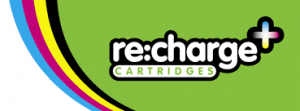 "I would like to say I'm very happy with your service, especially the audit team, your staff are always friendly, helpful and a pleasure to deal with."
"I would like to say I'm very happy with your service, especially the audit team, your staff are always friendly, helpful and a pleasure to deal with." -
 "Your business approach to clients is very impressive. I have always found that when explaining the types of service on offer, it is always concise and straight forward. The level of trust that clients place in your company and its staff speaks volumes."
"Your business approach to clients is very impressive. I have always found that when explaining the types of service on offer, it is always concise and straight forward. The level of trust that clients place in your company and its staff speaks volumes." -
 "I would like to take this opportunity to say how much we are impressed with your company's professionalism, it has been a pleasure working with you all and we look forward to working with you in the future."
"I would like to take this opportunity to say how much we are impressed with your company's professionalism, it has been a pleasure working with you all and we look forward to working with you in the future." -
 "Avid Partners - Accountants & Business Advisors are an excellent firm of accountants, their quality ethos is outstanding."
"Avid Partners - Accountants & Business Advisors are an excellent firm of accountants, their quality ethos is outstanding." -
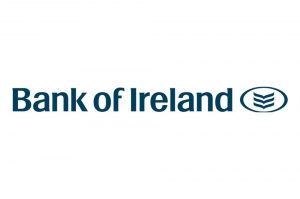 "I have dealt with Jamie O' Hanlon, of Avid Partners - Accountants & Business Advisors Chartered Certified Accountants, for a number of years as he is auditor to one of my clients. I have always found him to be professional and responsive in his approach."
"I have dealt with Jamie O' Hanlon, of Avid Partners - Accountants & Business Advisors Chartered Certified Accountants, for a number of years as he is auditor to one of my clients. I have always found him to be professional and responsive in his approach." -
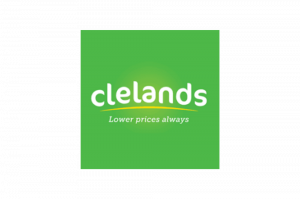 "Service is second to none; there is always someone at the end of the phone for any business advice. The staff are very easy to get along with, very approachable and know exactly what they are talking about"
"Service is second to none; there is always someone at the end of the phone for any business advice. The staff are very easy to get along with, very approachable and know exactly what they are talking about" -
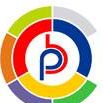 Having got to know the company through the BNI we decided it was time to change accountant. What impressed me about Avid Partners was their professionalism. Their attention to detail was second to none and as an added bonus they are a sounding board to all of my questions. Avid also potted some irregularities in my accounts from the previous few years and saved me substantial money on the years tax bill. Avid Partners deliver a first class service which is everything you could want from an accountant and I am happy to give this endorsement.
Having got to know the company through the BNI we decided it was time to change accountant. What impressed me about Avid Partners was their professionalism. Their attention to detail was second to none and as an added bonus they are a sounding board to all of my questions. Avid also potted some irregularities in my accounts from the previous few years and saved me substantial money on the years tax bill. Avid Partners deliver a first class service which is everything you could want from an accountant and I am happy to give this endorsement. -
 We at Fitzies Bar have worked with Avid Partners - Business & Financial Advisers for over five years. We find that the advice and support offered to us in addition to all of our book-keeping requirements to include payroll, VAT, etc. is invaluable and has helped to contribute to our continued growth especially in these challenging times. I would have no hesitation in recommending Avid Partners.
We at Fitzies Bar have worked with Avid Partners - Business & Financial Advisers for over five years. We find that the advice and support offered to us in addition to all of our book-keeping requirements to include payroll, VAT, etc. is invaluable and has helped to contribute to our continued growth especially in these challenging times. I would have no hesitation in recommending Avid Partners. -
 Jamie and his staff are a pleasure to work with. They respond promptly to any queries we have and are critical to our financial planning and the future needs of our business. I would highly recommend them to anyone interested in accounting services.
Jamie and his staff are a pleasure to work with. They respond promptly to any queries we have and are critical to our financial planning and the future needs of our business. I would highly recommend them to anyone interested in accounting services. -
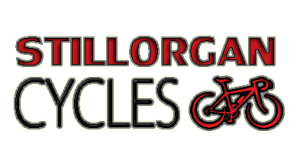 We at Stillorgan Cycles have used Jamie and his Team at Avid Partners – Accountants and Business Advisers for over five years. We have found that the retail advice and support offered to us is second to none and has helped to contribute to our continued growth especially in these challenging times. I would have no hesitation in recommending Avid Partners.
We at Stillorgan Cycles have used Jamie and his Team at Avid Partners – Accountants and Business Advisers for over five years. We have found that the retail advice and support offered to us is second to none and has helped to contribute to our continued growth especially in these challenging times. I would have no hesitation in recommending Avid Partners. -
 I met Avid Partners through a local business networking group. We had been using the same accountants for years and found that in these harsh economic times that we were not getting good enough value or service. We were very impressed by the company's professionalism and enthusiasm and genuine interest in helping us get the most out of our business. As a result we are now clients of Avid Partners and are thrilled with our decision.
I met Avid Partners through a local business networking group. We had been using the same accountants for years and found that in these harsh economic times that we were not getting good enough value or service. We were very impressed by the company's professionalism and enthusiasm and genuine interest in helping us get the most out of our business. As a result we are now clients of Avid Partners and are thrilled with our decision.
